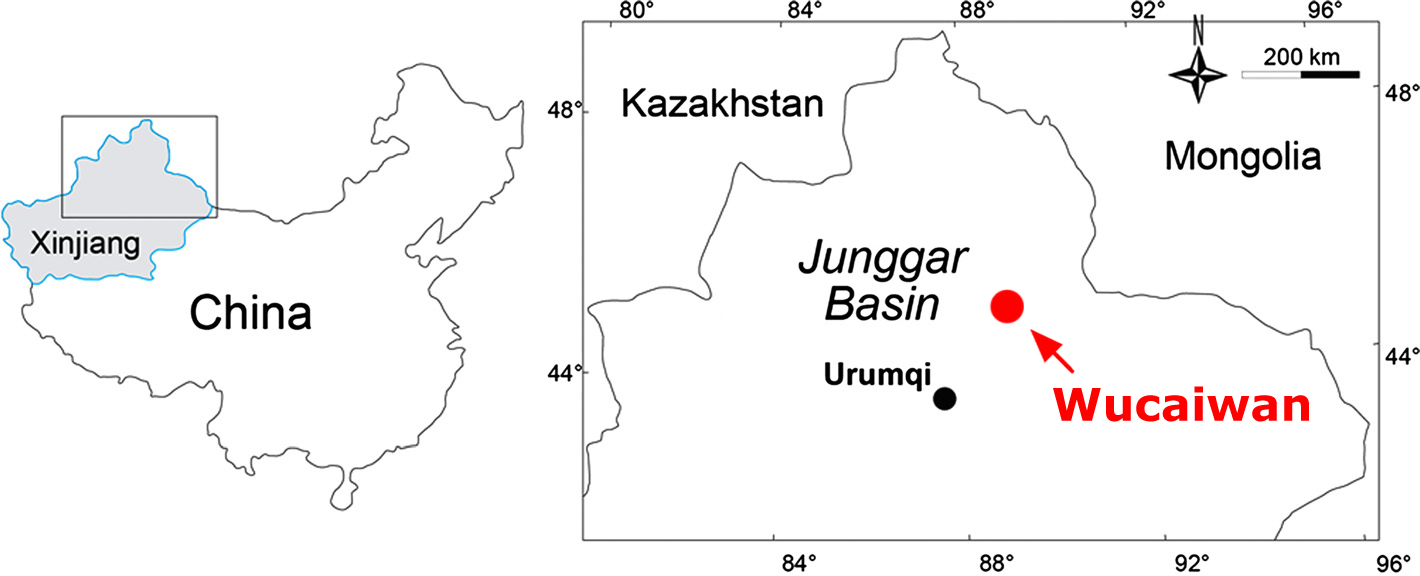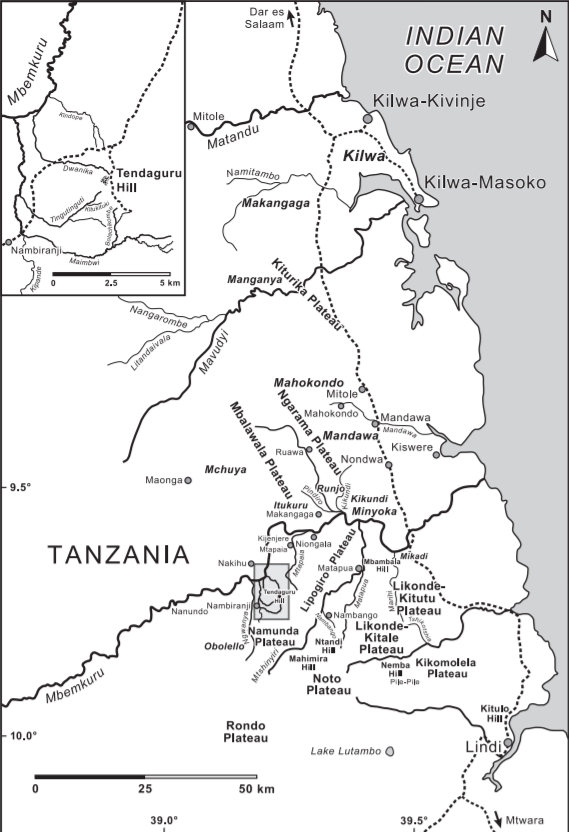|
Elaphrosaurus
''Elaphrosaurus'' ( ) is a genus of ceratosaurian theropod dinosaur that lived approximately 154 to 150 million years ago during the Late Jurassic Period in what is now Tanzania in Africa. ''Elaphrosaurus'' was a medium-sized but lightly built member of the group that could grow up to long. Morphologically, this dinosaur is significant in two ways. Firstly, it has a relatively long body but is very shallow-chested for a theropod of its size. Secondly, it has very short hindlimbs in comparison with its body. Phylogenetic analyses indicate that this genus is likely a ceratosaur. Earlier suggestions that it is a late surviving coelophysoid have been examined but generally dismissed. ''Elaphrosaurus'' is currently believed to be a very close relative of ''Limusaurus'', an unusual beaked ceratosaurian which may have been either herbivorous or omnivorous. Discovery The type specimen of ''Elaphrosaurus bambergi'' HMN Gr.S. 38–44 was recovered in the Middle Dinosaur Member of the ... [...More Info...] [...Related Items...] OR: [Wikipedia] [Google] [Baidu] |
Elaphrosaurus Bambergi
''Elaphrosaurus'' ( ) is a genus of ceratosaurian theropod dinosaur that lived approximately 154 to 150 million years ago during the Late Jurassic Period in what is now Tanzania in Africa. ''Elaphrosaurus'' was a medium-sized but lightly built member of the group that could grow up to long. Morphologically, this dinosaur is significant in two ways. Firstly, it has a relatively long body but is very shallow-chested for a theropod of its size. Secondly, it has very short hindlimbs in comparison with its body. Phylogenetic analyses indicate that this genus is likely a ceratosaur. Earlier suggestions that it is a late surviving coelophysoid have been examined but generally dismissed. ''Elaphrosaurus'' is currently believed to be a very close relative of ''Limusaurus'', an unusual beaked ceratosaurian which may have been either herbivorous or omnivorous. Discovery The type specimen of ''Elaphrosaurus bambergi'' HMN Gr.S. 38–44 was recovered in the Middle Dinosaur Member of the ... [...More Info...] [...Related Items...] OR: [Wikipedia] [Google] [Baidu] |
Limusaurus
''Limusaurus'' is a genus of theropod dinosaur that lived in what is now China during the Late Jurassic, around 161 to 157 million years ago. The type and only species ''Limusaurus inextricabilis'' was described in 2009 from specimens found in the Upper Shishugou Formation in the Junggar Basin of China. The genus name consists of the Latin words for "mud" and "lizard", and the species name means "impossible to extricate", both referring to these specimens possibly dying after being mired. ''Limusaurus'' was a small, slender animal, about in length and in weight, which had a long neck and legs but very small forelimbs (with reduced first and fourth fingers). It underwent a drastic morphological transformation as it aged: while juveniles were toothed, these teeth were completely lost and replaced by a beak with age. Several of these features were convergently similar to the later ornithomimid theropods as well as the earlier non-dinosaurian shuvosaurids. ''Limusaurus ... [...More Info...] [...Related Items...] OR: [Wikipedia] [Google] [Baidu] |
Ceratosaur
Ceratosaurs are members of the clade Ceratosauria, a group of dinosaurs defined as all theropods sharing a more recent common ancestor with ''Ceratosaurus'' than with birds. The oldest known ceratosaur, ''Saltriovenator'', dates to the earliest part of the Jurassic, around 199 million years ago. According to the majority of the latest research, Ceratosauria includes three major clades: Ceratosauridae, Noasauridae, and Abelisauridae, found primarily (though not exclusively) in the Southern Hemisphere. Originally, Ceratosauria included the above dinosaurs plus the Late Triassic to Early Jurassic Coelophysoidea and Dilophosauridae, implying a much earlier divergence of ceratosaurs from other theropods. However, most recent studies have shown that coelophysoids and dilophosaurids do not form a natural group with other ceratosaurs, and are excluded from this group. Ceratosauria derives its names from the type species, ''Ceratosaurus nasicornis'', described by O.C. Marsh in 1884. A ... [...More Info...] [...Related Items...] OR: [Wikipedia] [Google] [Baidu] |
Ceratosauria
Ceratosaurs are members of the clade Ceratosauria, a group of dinosaurs defined as all theropods sharing a more recent common ancestor with ''Ceratosaurus'' than with birds. The oldest known ceratosaur, ''Saltriovenator'', dates to the earliest part of the Jurassic, around 199 million years ago. According to the majority of the latest research, Ceratosauria includes three major clades: Ceratosauridae, Noasauridae, and Abelisauridae, found primarily (though not exclusively) in the Southern Hemisphere. Originally, Ceratosauria included the above dinosaurs plus the Late Triassic to Early Jurassic Coelophysoidea and Dilophosauridae, implying a much earlier divergence of ceratosaurs from other theropods. However, most recent studies have shown that coelophysoids and dilophosaurids do not form a natural group with other ceratosaurs, and are excluded from this group. Ceratosauria derives its names from the type species, ''Ceratosaurus nasicornis'', described by O.C. Marsh in 1884. A ... [...More Info...] [...Related Items...] OR: [Wikipedia] [Google] [Baidu] |
1920 In Paleontology
Arthropods Newly named insects Archosauromorphs Newly named dinosaurs Data courtesy of George Olshevsky's dinosaur genera list. Synapsids Non-mammalian References {{portal, Paleontology 1920s in paleontology Paleontology Paleontology (), also spelled palaeontology or palæontology, is the scientific study of life that existed prior to, and sometimes including, the start of the Holocene epoch (roughly 11,700 years before present). It includes the study of fossi ... Paleontology 0 ... [...More Info...] [...Related Items...] OR: [Wikipedia] [Google] [Baidu] |
Tendaguru Formation
The Tendaguru Formation, or Tendaguru Beds are a highly fossiliferous formation and Lagerstätte located in the Lindi Region of southeastern Tanzania. The formation represents the oldest sedimentary unit of the Mandawa Basin, overlying Neoproterozoic basement, separating by a long hiatus and unconformity. The formation reaches a total sedimentary thickness of more than . The formation ranges in age from the late Middle Jurassic to the Early Cretaceous, Oxfordian to Hauterivian stages, with the base of the formation possibly extending into the Callovian. The Tendaguru Formation is subdivided into six members; from oldest to youngest Lower Dinosaur Member, the ''Nerinella'' Member, the Middle Dinosaur Member, ''Indotrigonia africana'' Member, the Upper Dinosaur Member, and the ''Rutitrigonia bornhardti-schwarzi'' Member. The succession comprises a sequence of sandstones, shales, siltstones, conglomerates with minor oolitic limestones, deposited in an overall shallow marine to c ... [...More Info...] [...Related Items...] OR: [Wikipedia] [Google] [Baidu] |
Lindi Region
Lindi Region (''Mkoa wa Lindi'' in Swahili) is one of Tanzania's 31 administrative regions. The region covers an area of . The region is comparable in size to the combined land area of the nation state of Sri Lanka. The regional capital is the municipality of Lindi. The Lindi Region borders on Pwani Region, Morogoro Region, Ruvuma Region, and Mtwara Region. The name Lindi is an old Swahili word meaning "hiding pits", a place where Swahili people will hide to defend themselves from hostile invasions. The region is home to two UNESCO World Heritage Sites, namely; Kilwa Kisiwani and Selous Game Reserve. According to the 2012 national census, the region had a population of 864,652, which was lower than the pre-census projection of 960,236. [...More Info...] [...Related Items...] OR: [Wikipedia] [Google] [Baidu] |
Werner Janensch
Werner Ernst Martin Janensch (11 November 1878 – 20 October 1969) was a German paleontologist and geologist. Biography Janensch was born at Herzberg (Elster). In addition to Friedrich von Huene, Janensch was probably Germany's most important dinosaur specialist from the early and middle twentieth century. His most famous and significant contributions stemmed from the expedition undertaken to the Tendaguru Beds in what is now Tanzania. As leader of an expedition (together with Edwin Hennig) set up by the Museum für Naturkunde in Berlin, where he worked as a curator, Janensch helped uncover an enormous quantity of fossils of late Jurassic period dinosaurs, including several complete ''Brachiosaurus'' skeletons, then the largest animal ever known. During his long subsequent career (he worked in Berlin from 1914 to 1961), Janensch named several new dinosaur taxa including ''Dicraeosaurus'' (1914) and ''Elaphrosaurus'' (1920). Janensch's ''Brachiosaurus'' were later determ ... [...More Info...] [...Related Items...] OR: [Wikipedia] [Google] [Baidu] |
Greek Language
Greek ( el, label=Modern Greek, Ελληνικά, Elliniká, ; grc, Ἑλληνική, Hellēnikḗ) is an independent branch of the Indo-European family of languages, native to Greece, Cyprus, southern Italy (Calabria and Salento), southern Albania, and other regions of the Balkans, the Black Sea coast, Asia Minor, and the Eastern Mediterranean. It has the longest documented history of any Indo-European language, spanning at least 3,400 years of written records. Its writing system is the Greek alphabet, which has been used for approximately 2,800 years; previously, Greek was recorded in writing systems such as Linear B and the Cypriot syllabary. The alphabet arose from the Phoenician script and was in turn the basis of the Latin, Cyrillic, Armenian, Coptic, Gothic, and many other writing systems. The Greek language holds a very important place in the history of the Western world. Beginning with the epics of Homer, ancient Greek literature includes many works of lasting impo ... [...More Info...] [...Related Items...] OR: [Wikipedia] [Google] [Baidu] |
Robert Scott (philologist)
Robert Scott (26 January 1811 – 2 December 1887) was a British academic philologist and Church of England priest. Biography Scott was born on 26 January 1811 in Bondleigh, Devon, England. He was educated at St Bees School in Cumbria, and Shrewsbury School in Shropshire. He studied classics at Christ Church, Oxford, graduating with a Bachelor of Arts (BA) degree in 1833. Scott was ordained in 1835 and held the college living of Duloe, Cornwall, from 1845 to 1850. He was a prebendary of Exeter Cathedral from 1845 to 1866 and rector of South Luffenham, Rutland, from 1850 to 1854 when he was elected Master of Balliol College, Oxford. He served as Dean Ireland's Professor of the Exegesis of Holy Scripture at Oxford from 1861 to 1870 and as the Dean of Rochester from 1870 until his death in 1887. Scott is best known as the co-editor (with his colleague Henry Liddell) of '' A Greek-English Lexicon'', the standard dictionary of the classical Greek language. According to the 1925 ... [...More Info...] [...Related Items...] OR: [Wikipedia] [Google] [Baidu] |
Henry George Liddell
Henry George Liddell (; 6 February 1811– 18 January 1898) was dean (1855–1891) of Christ Church, Oxford, Vice-Chancellor of Oxford University (1870–1874), headmaster (1846–1855) of Westminster School (where a house is now named after him), author of ''A History of Rome'' (1855), and co-author (with Robert Scott) of the monumental work ''A Greek–English Lexicon'', known as "Liddell and Scott", which is still widely used by students of Greek. Lewis Carroll wrote ''Alice's Adventures in Wonderland'' for Henry Liddell's daughter Alice Liddell, Alice. Life Liddell received his education at Charterhouse School, Charterhouse and Christ Church, Oxford. He gained a British undergraduate degree classification, double first degree in 1833, then became a college tutor, and was ordained in 1838. Liddell was Headmaster of Westminster School (God Gives the Increase) , established = Earliest records date from the 14th century, refounded in 1560 , type = Publi ... [...More Info...] [...Related Items...] OR: [Wikipedia] [Google] [Baidu] |






.jpg)


